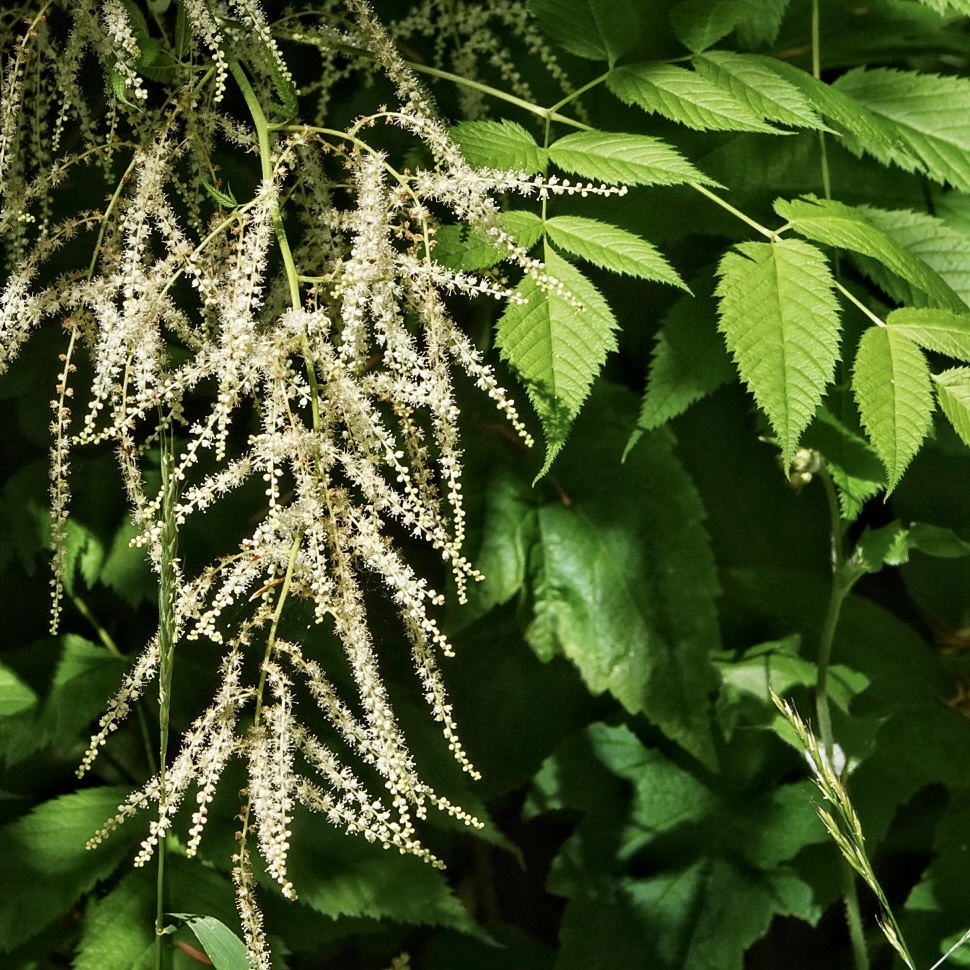
When it is blooming, Aruncus dioicous is unmistakable. Nothing else has those panicles with thin racemes of tiny white flowers. And even when it’s not in bloom, this shrub in the rose family is readily identifiable, because of the pointed oval leaflets with alternating small and large teeth and distinct pinnate veins. It has mostly finished blooming here in the lowlands, but it is going strong now up in the mountains. It is dioecious, meaning it has male and female flowers on separate plants. I apologize for having forgotten this fact and therefore failing to get closeups of the different flowers. Plants with male flowers tend to have a showier inflorescence.
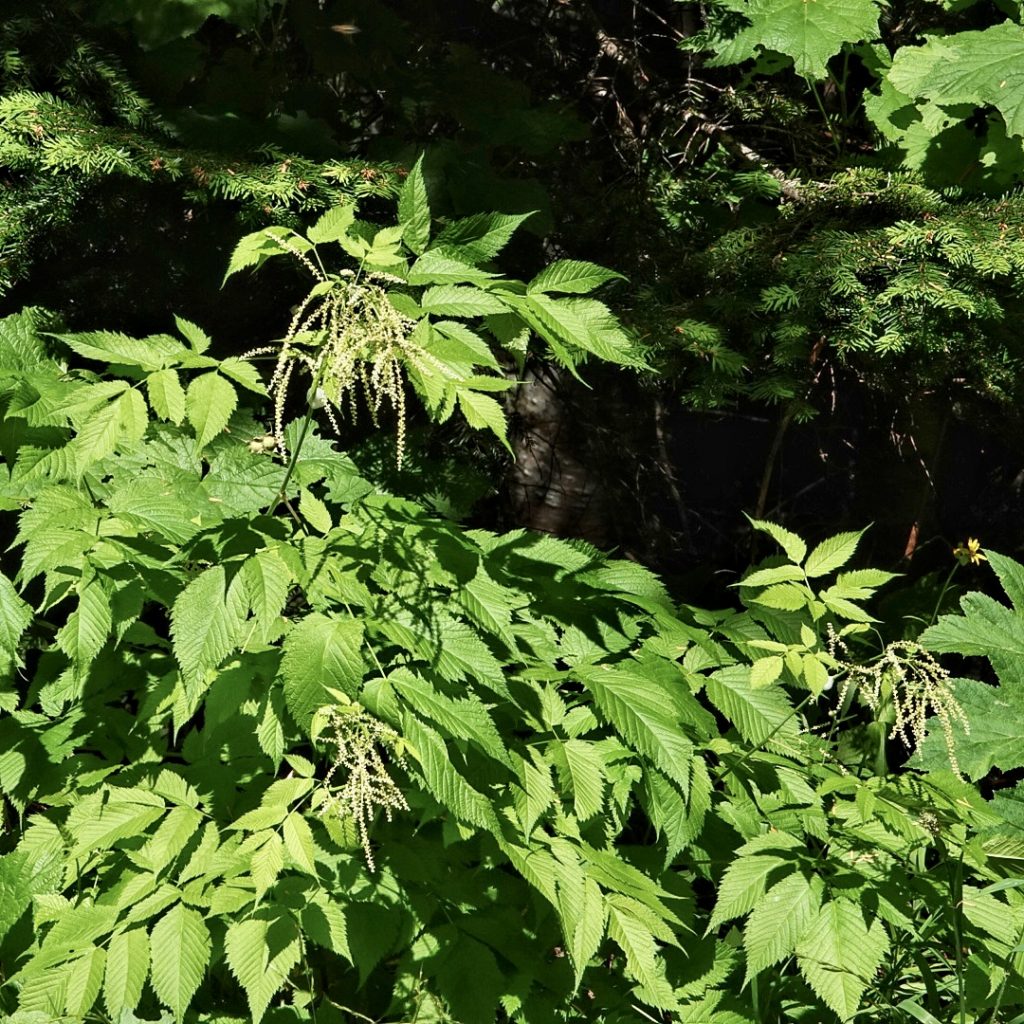
There is a long history of people around the world eating this plant. Young shoots, leaves, stems, and budding inflorescences are cooked, usually by boiling with other herbs for a short time, and eaten as greens. Care should be exercised when consuming this plant because it is known to contain cyanogenic glycosides, although boiling may reduce the risk, and concentrations may be lower in young shoots and leaves.
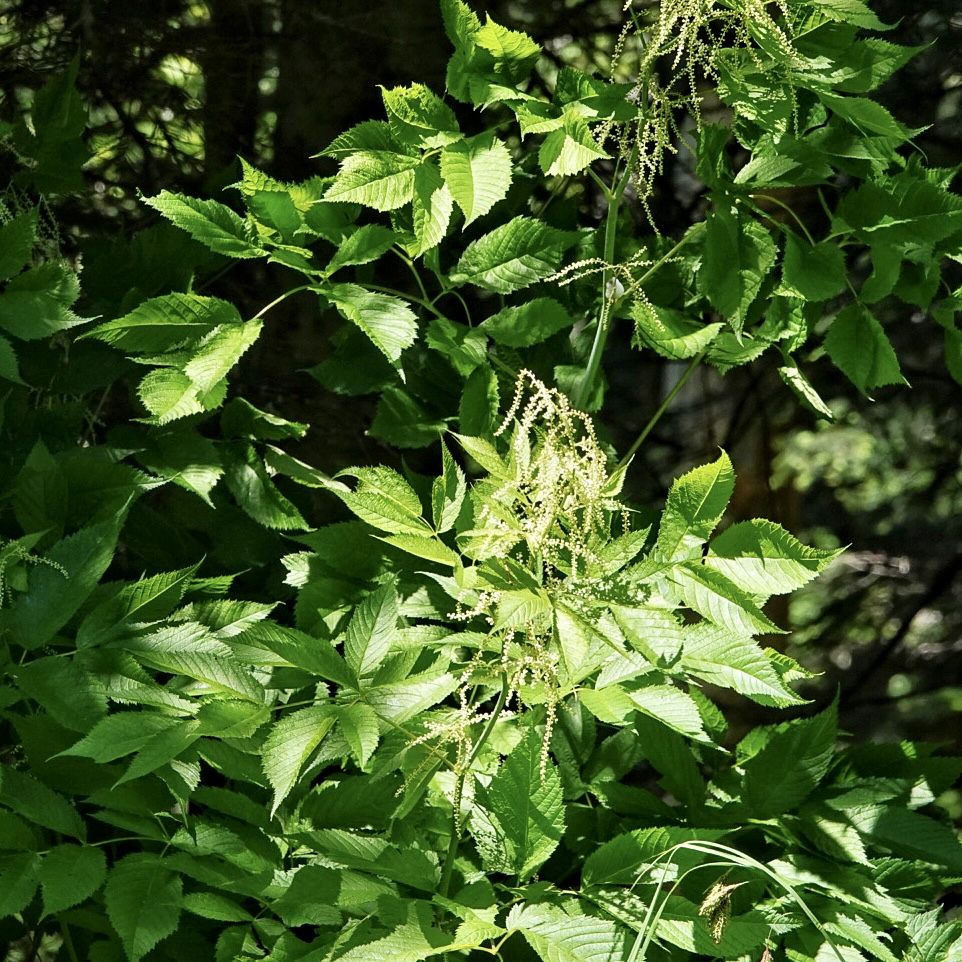
It also has been used medicinally by cultures in many different lands. The root seems to be the most frequently utilized part for medicinal purposes. Tea and decoctions of the roots were used to treat coughs, stomach pains, excessive urination, bleeding after childbirth, gonorrhea, flu, kidney problems, and seemingly anything else that might ail one. Poultices of chewed or boiled leaves were applied to bee stings, sores, and infected wounds.
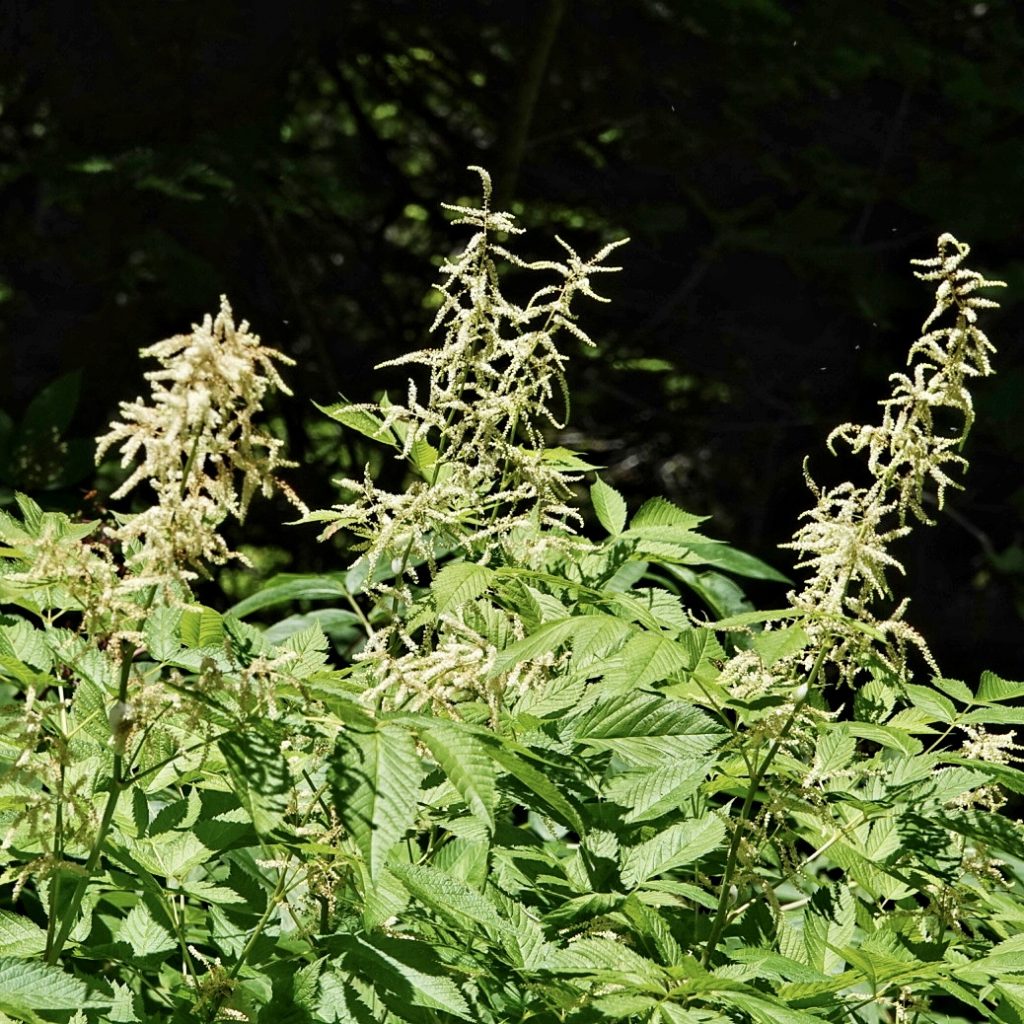
And from an aesthetic standpoint, it’s just an interesting plant to look at, a handsome if not beautiful shrub. The leaves add a compelling texture to the landscape, there is a graceful swoop to the branching, and the inflorescence is immediately noticeable, but never overbearing. If I was planting a native garden I would have to grow one of these to accent other, showier shrubs.
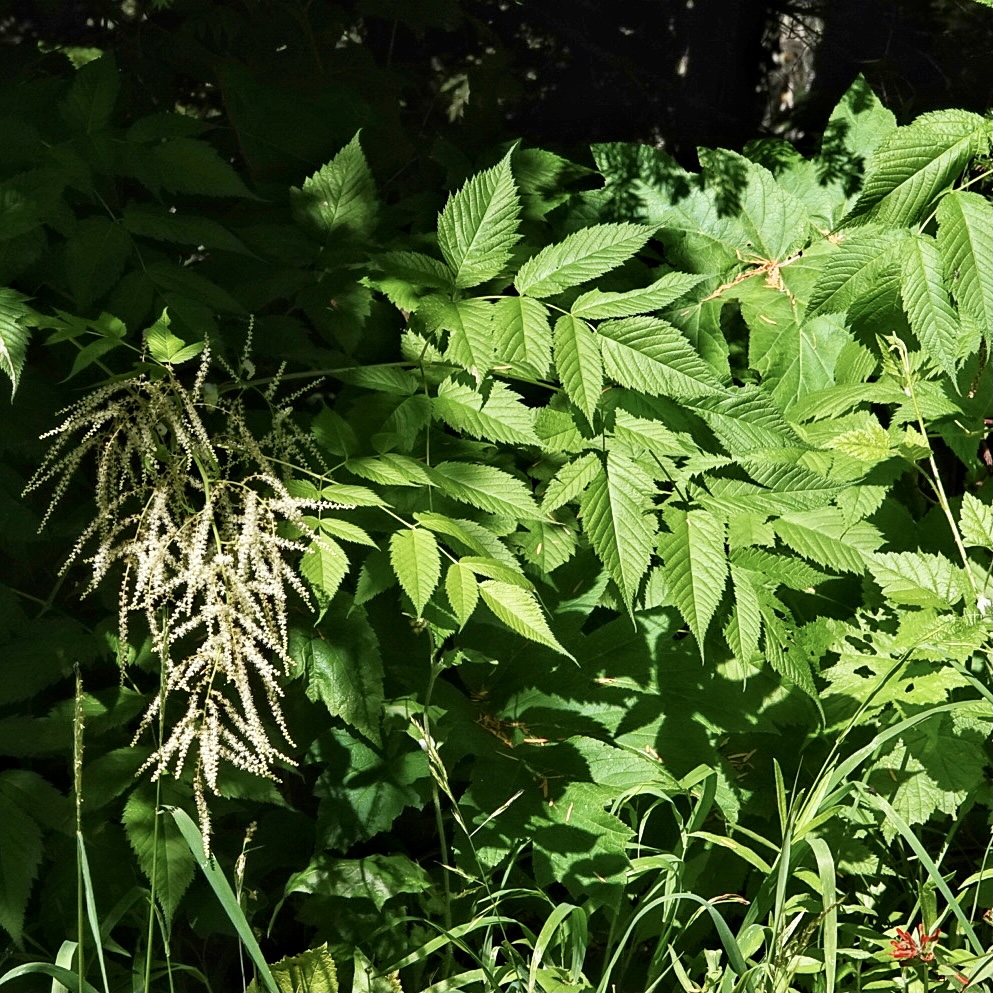
Description– Perennial, medium sized (up to 7’ tall) woody shrub with long petioled, pinnately divided leaves that are mostly on the stem, and thin, multiply branched white inflorescence; leaflets slightly hairy, oval, with alternating small and large teeth, and pointed at the apex; inflorescence is a panicle of spike like racemes with tiny white flowers.
Similar species– ETA- apparently I was arrogant to think there were no similar species, so I should point out that salmonberry leaves are wrinkly and wider, and the flower is pink to purple; Sambus spp. (elderberry) leaves have only single small teeth and are narrower bwithout the distinct, almost geometric veining, and have opposite, pinnately compound leaflets; Holodiscus spp. have rounder, simple leaves that don’t come to a point, and the teeth on the margin are uniformly large and rounded.
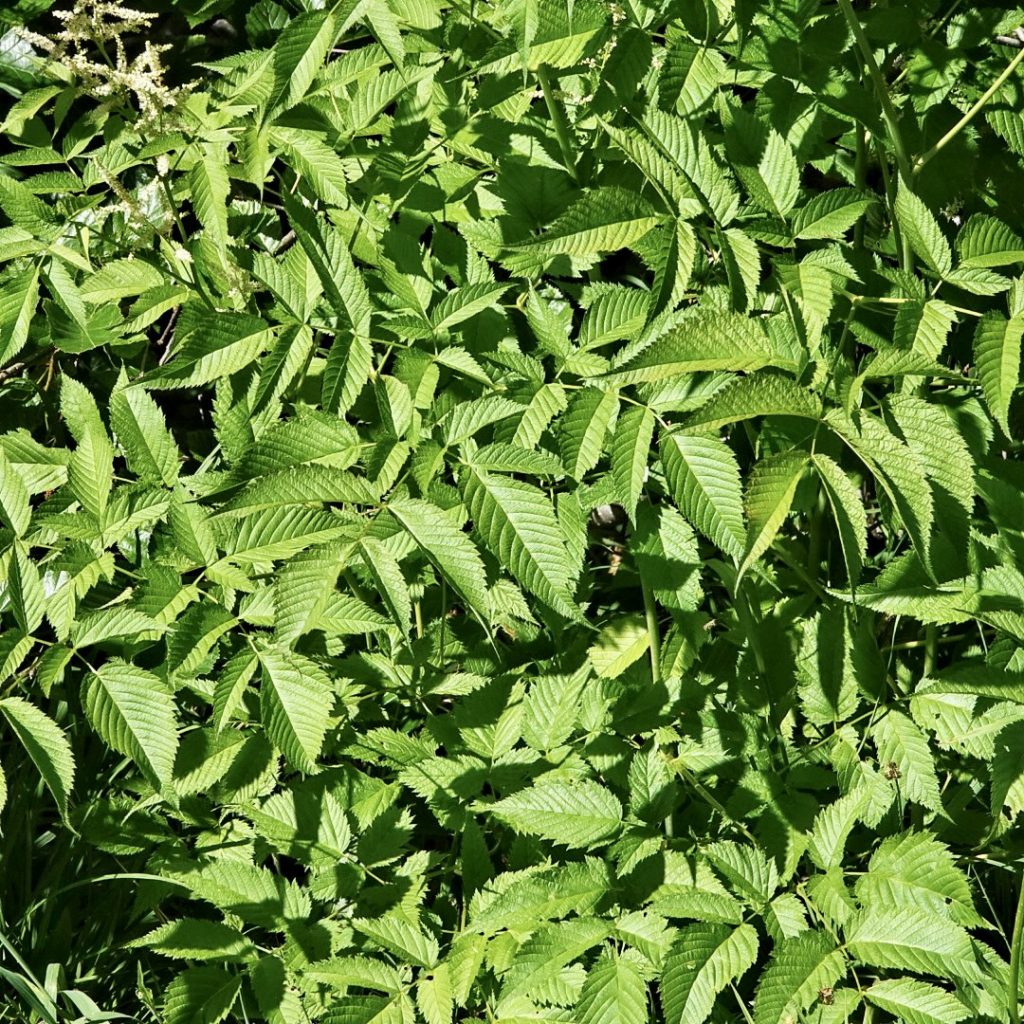
Habitat-Moist to mesic forests and forest openings up to subalpine elevations.
Range-Temperate areas of the Northern Hemisphere; primarily from the east slope of the Cascades west to the Pacific in our region.
Reproductive timing-Blooms May to August
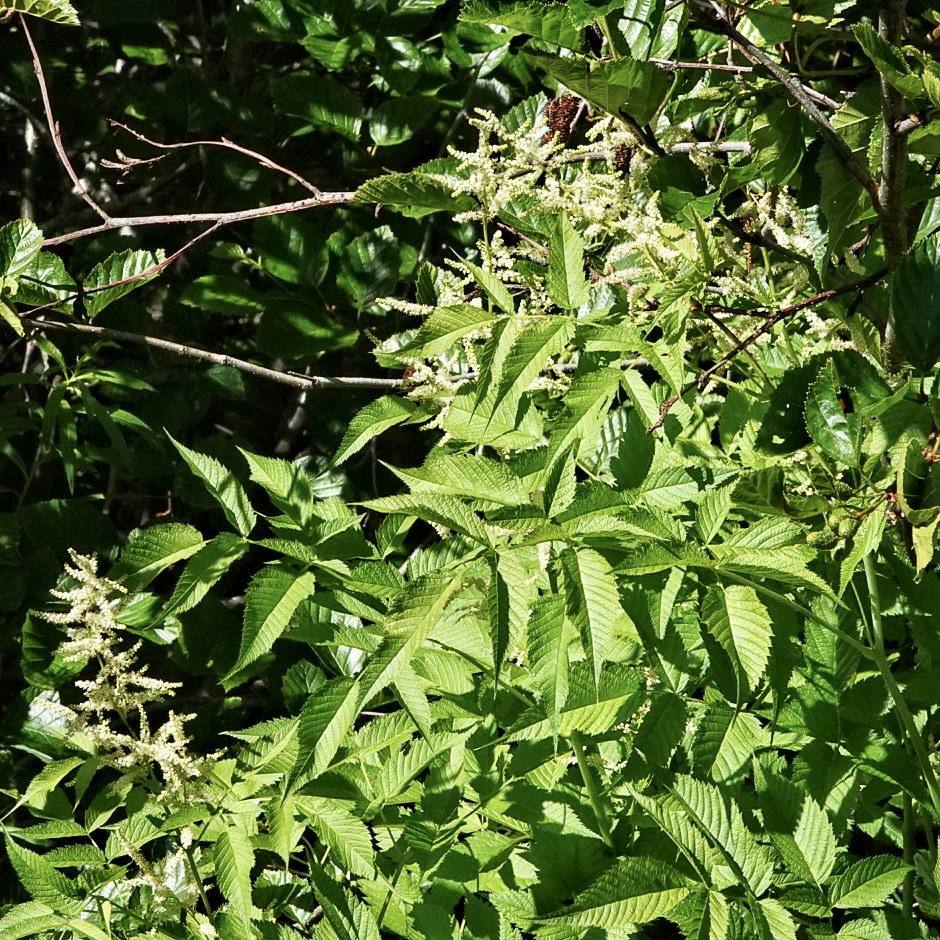
Eaten by-The leaf beetles Disonycha procera and Galerucella nymphaea have been found on cultivated specimens of this species; larvae of the flies Agromyza spiraeoidearum and others in that genus are known to form mines in the leaves of this species; a wide variety of insects partake of the nectar and pollen, but deer, rabbits, and other browsers tend to avoid eating the leaves.
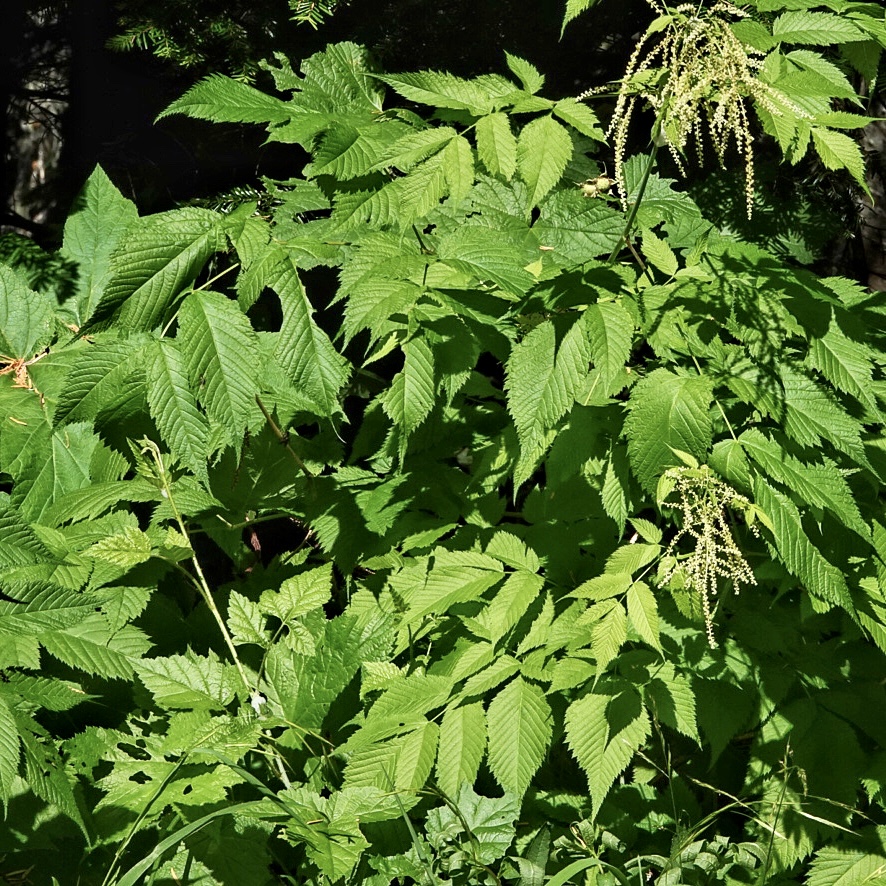
Etymology of names–Aruncus is from the Greek word for ‘goat’s beard, and refers to the inflorescence. The specific epithet dioicous is from the Greek words for ‘two houses’, and refers to the fact that male and female reproductive structures are on separate plants.
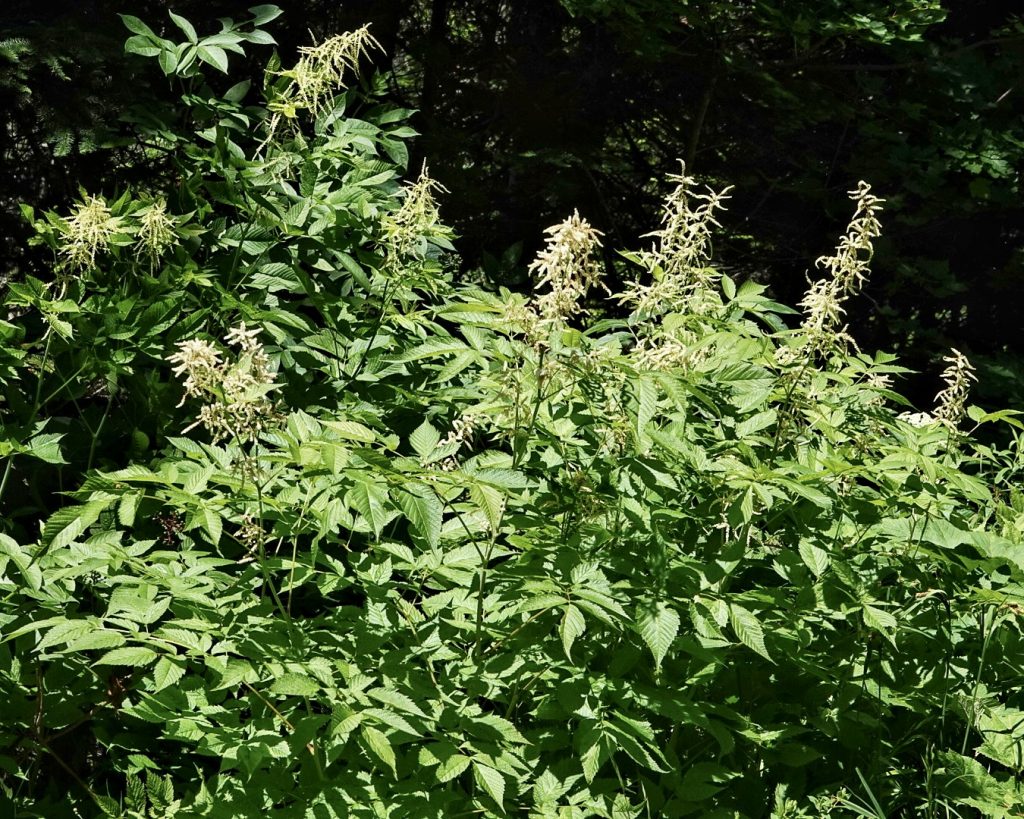
https://eflora.neocities.org/Aruncus%20dioicus.html
https://www.fs.fed.us/wildflowers/plant-of-the-week/aruncus_dioicus.shtml
http://temperate.theferns.info/plant/Aruncus+dioicus
Aruncus dioicus | Goat’s Beard | Wildflowers of the Pacific Northwest
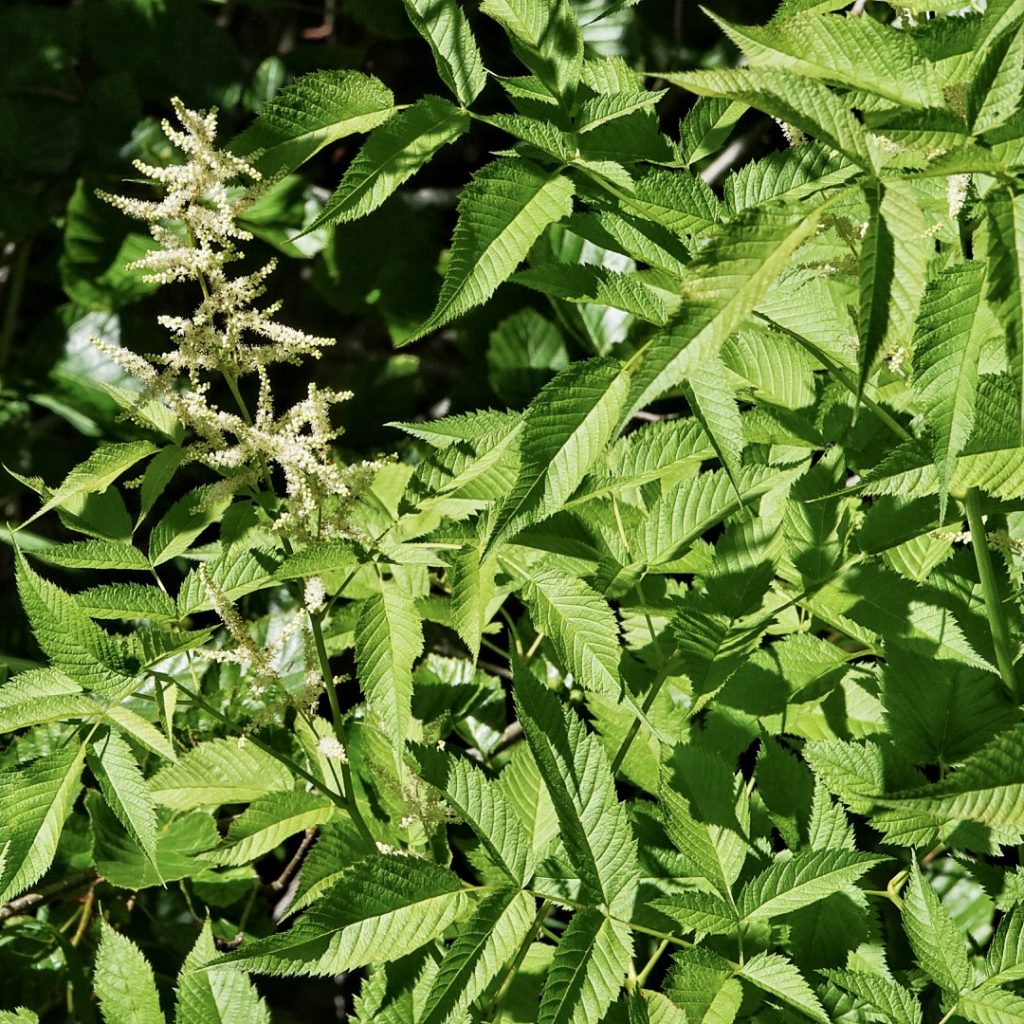
Oh I’m excited. This is wonderful.
Thanks! Glad you liked it!